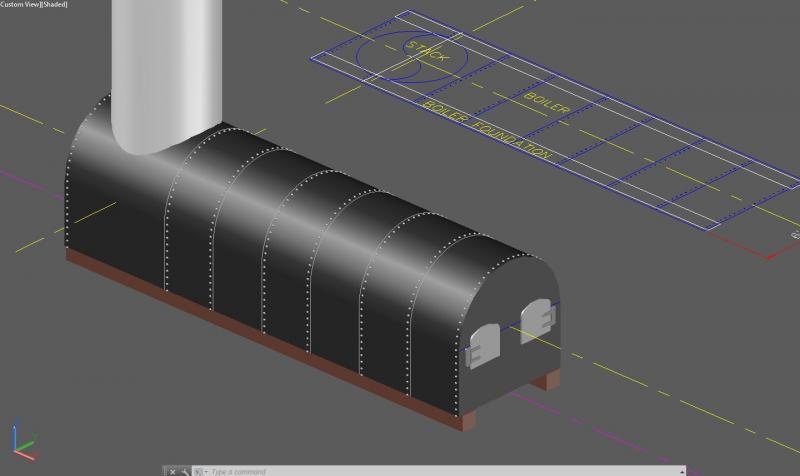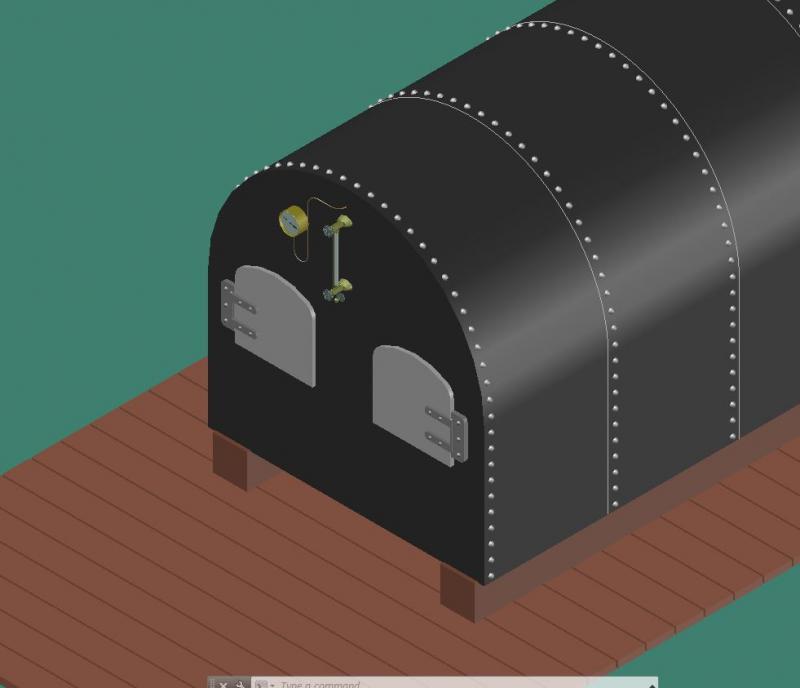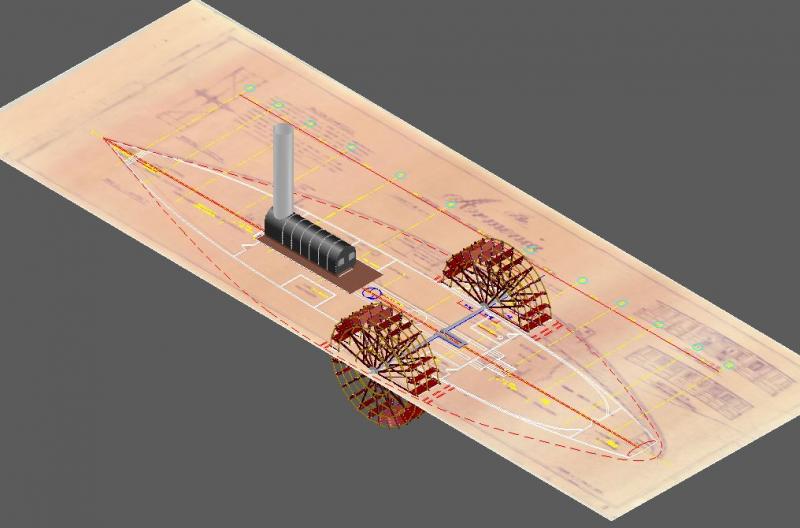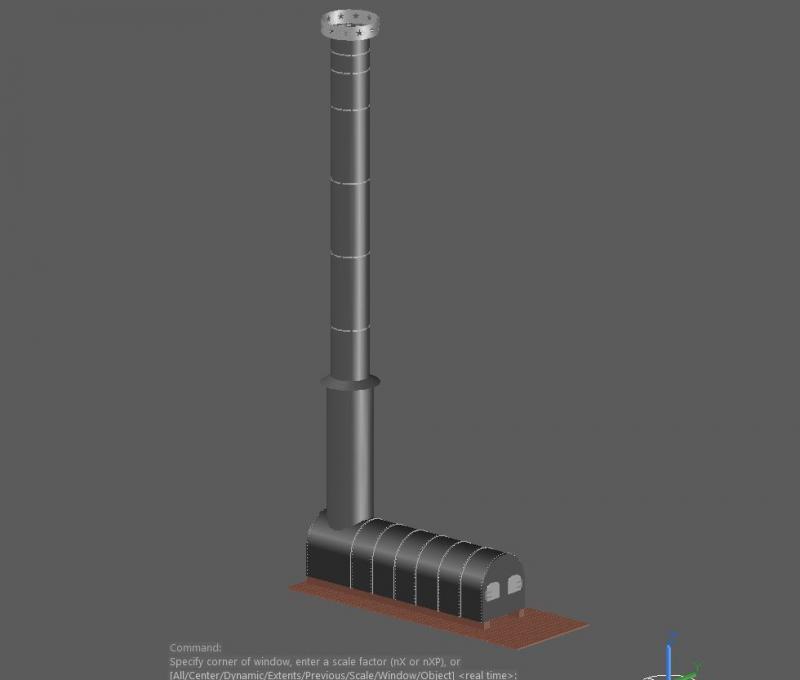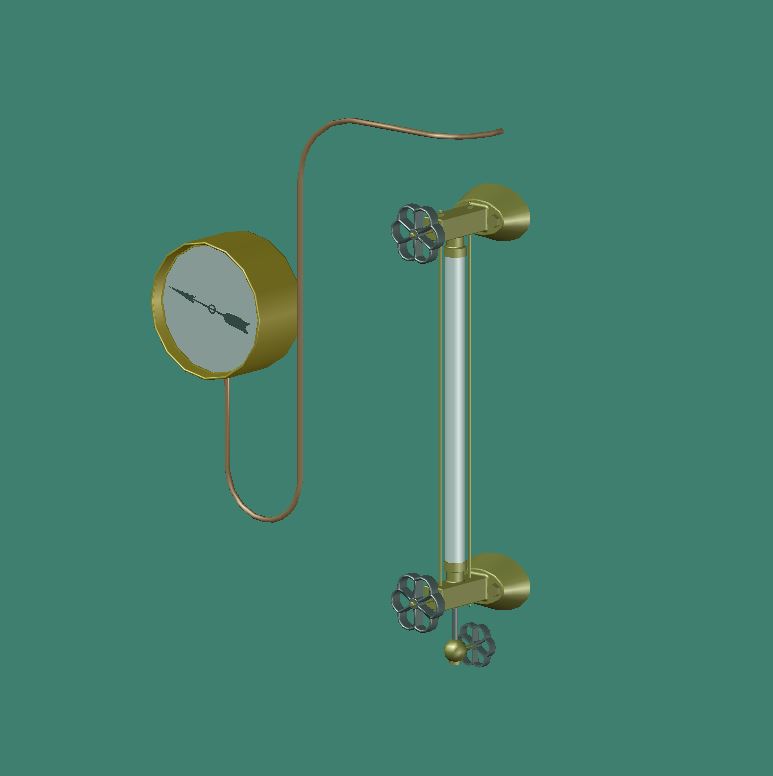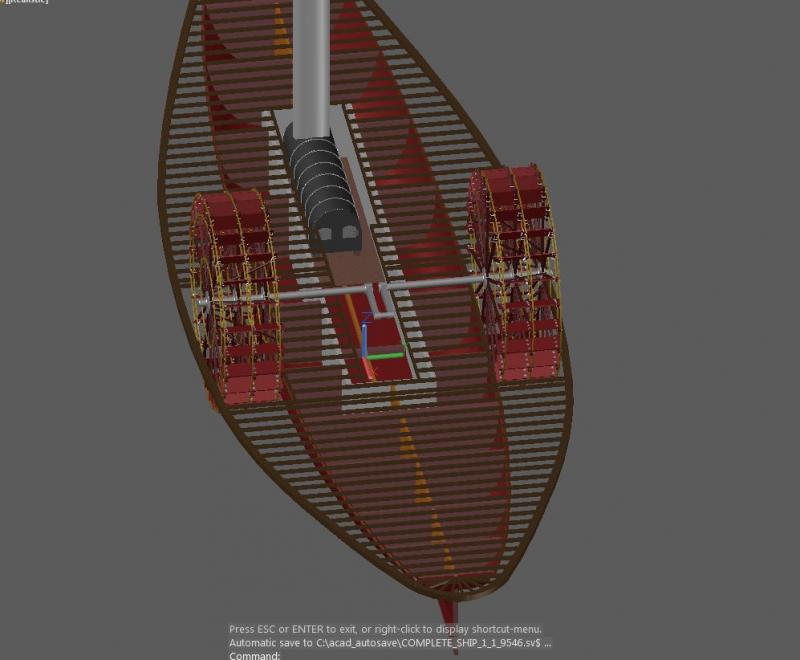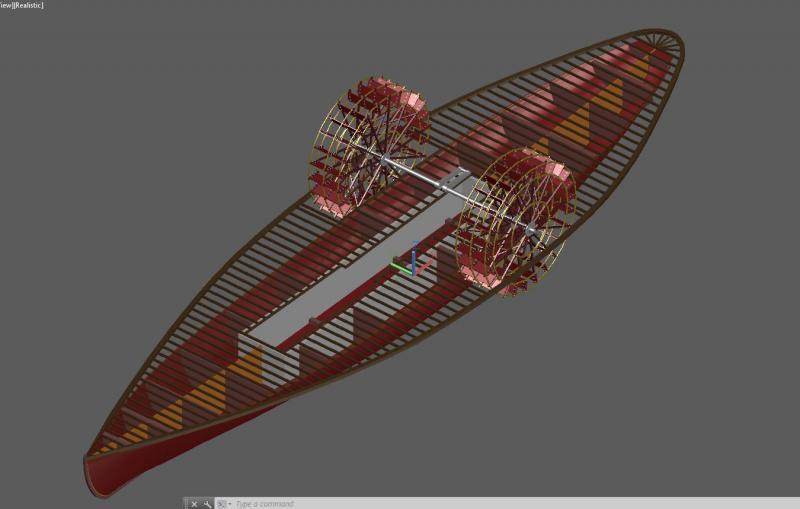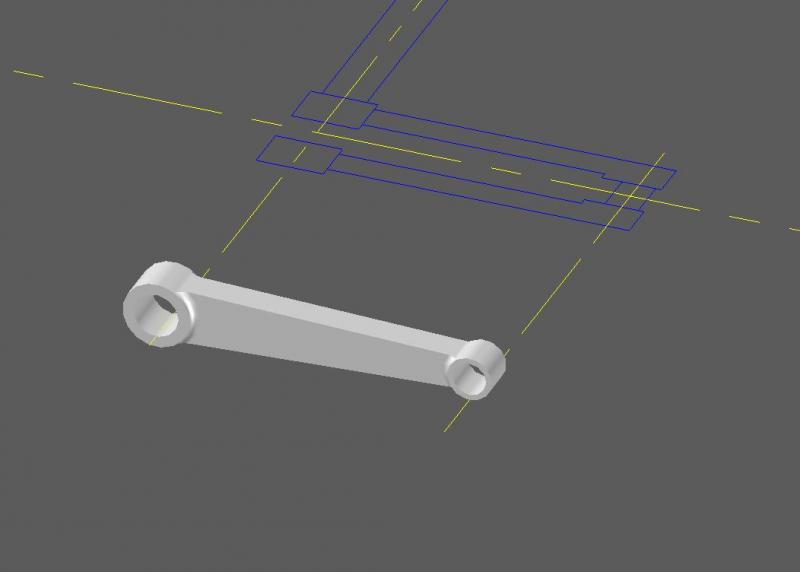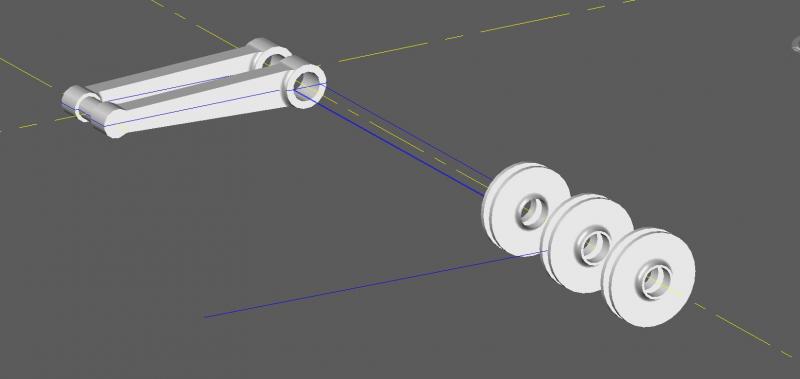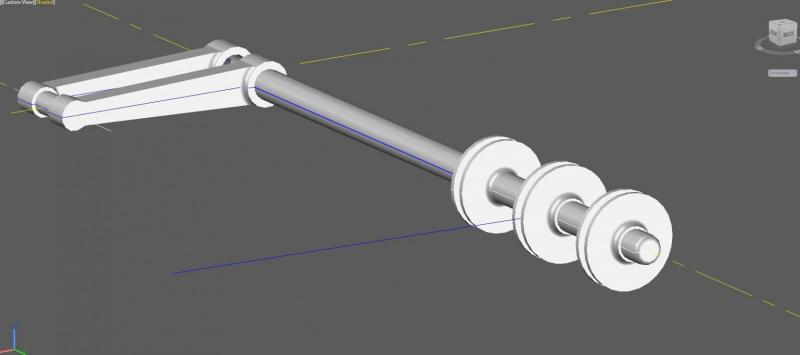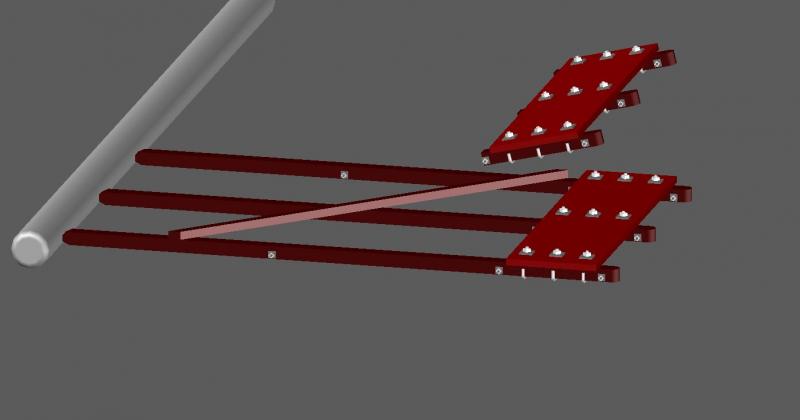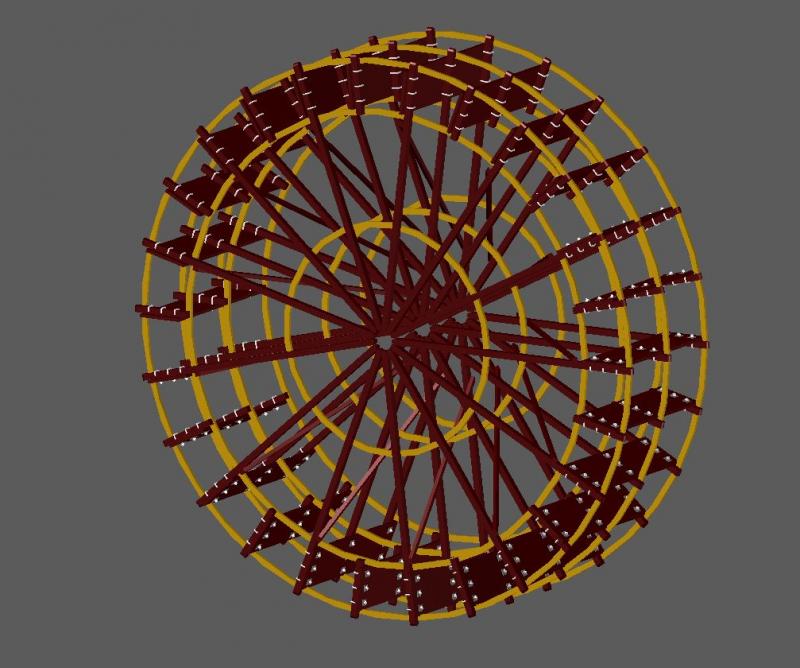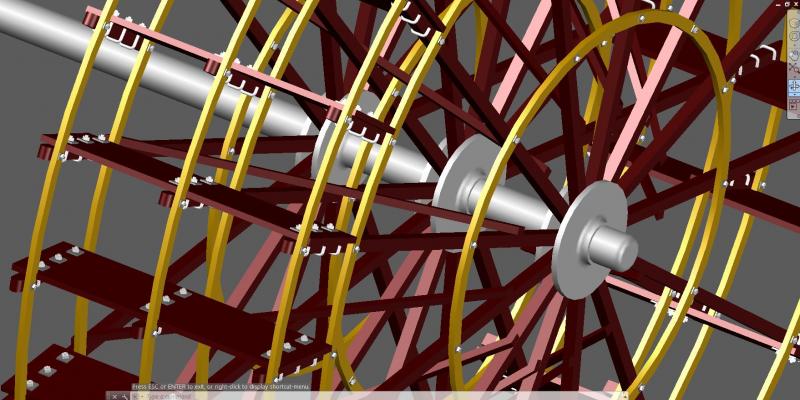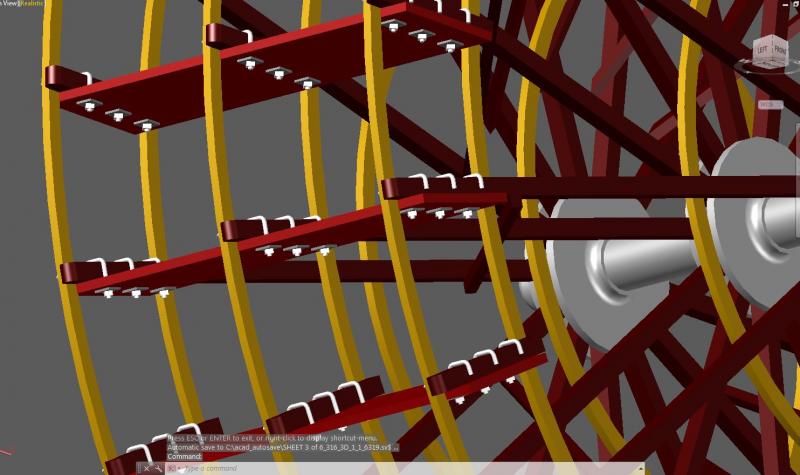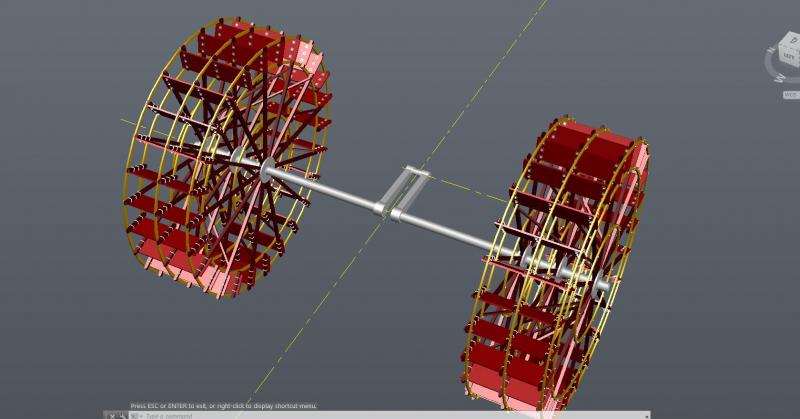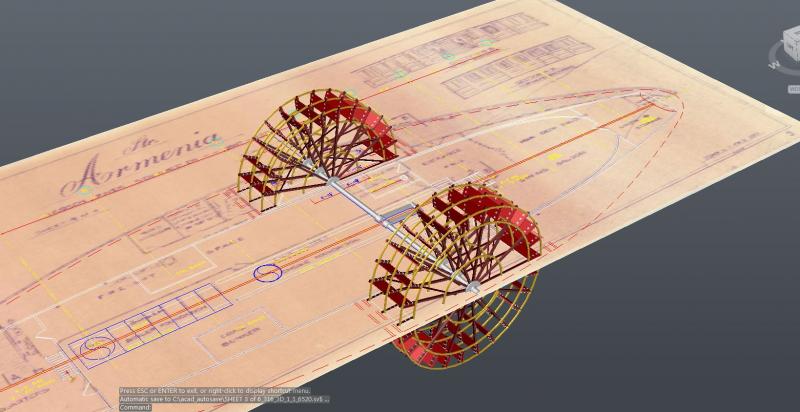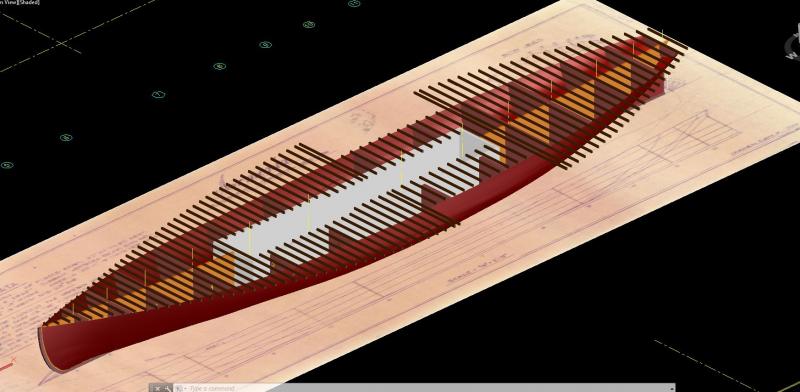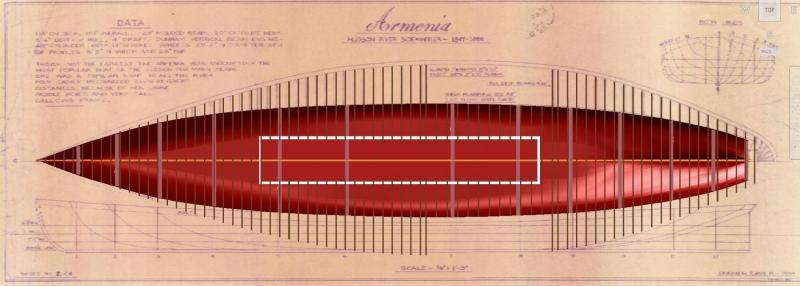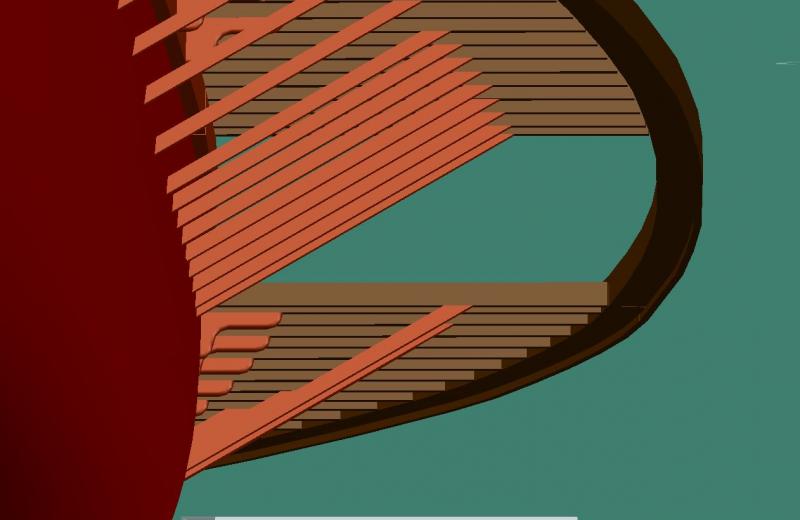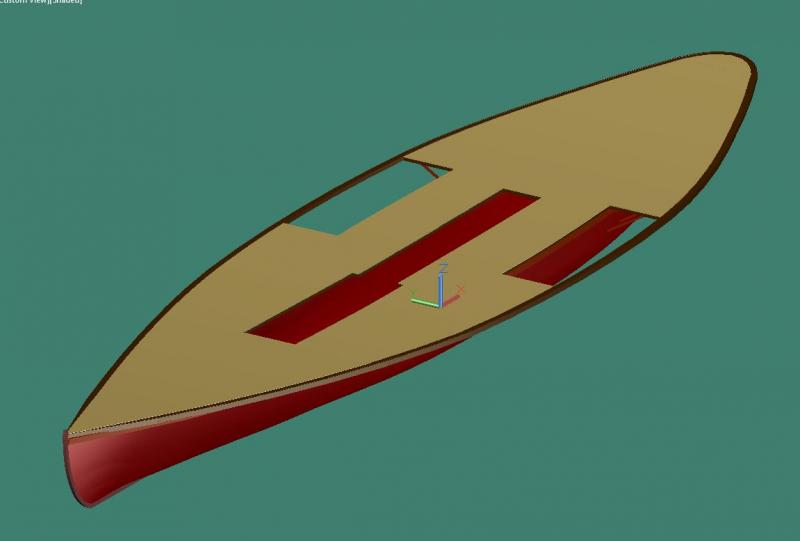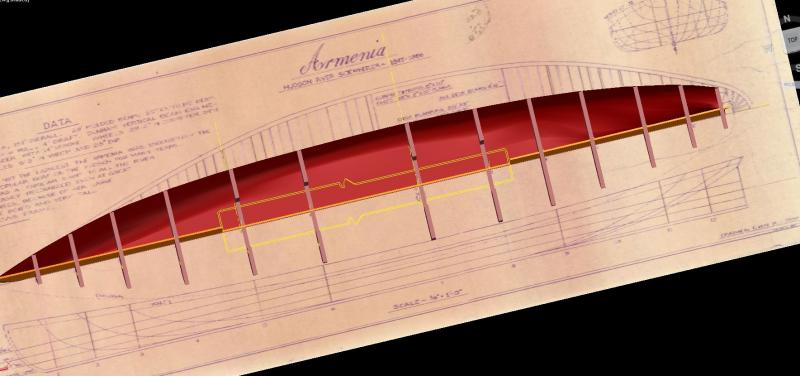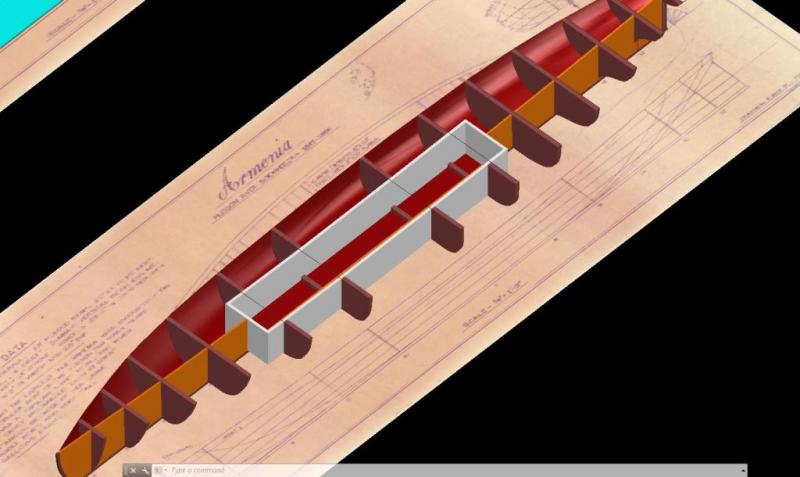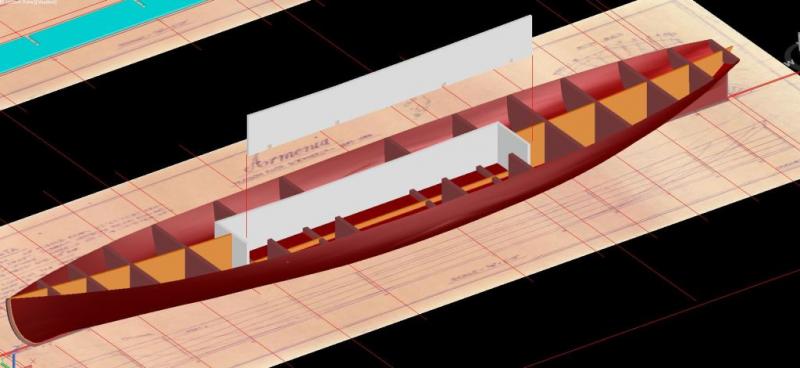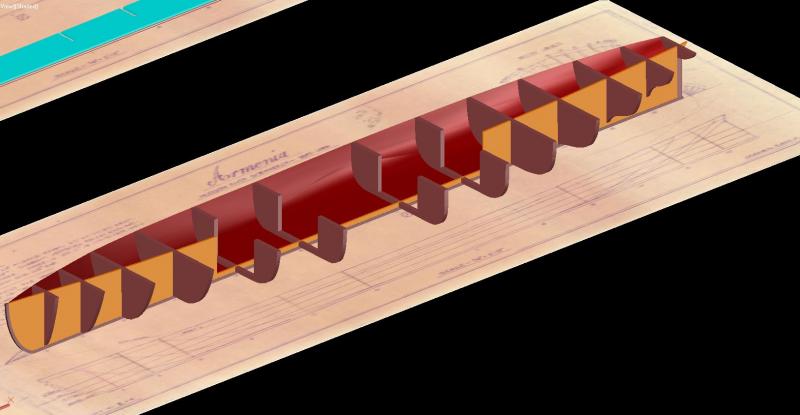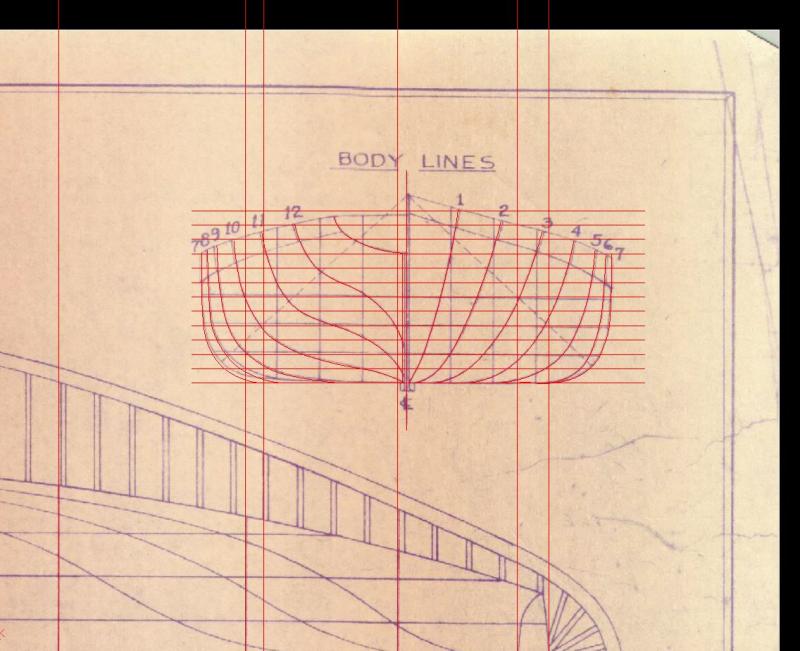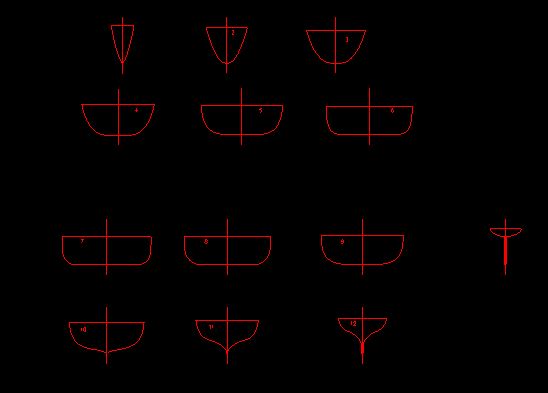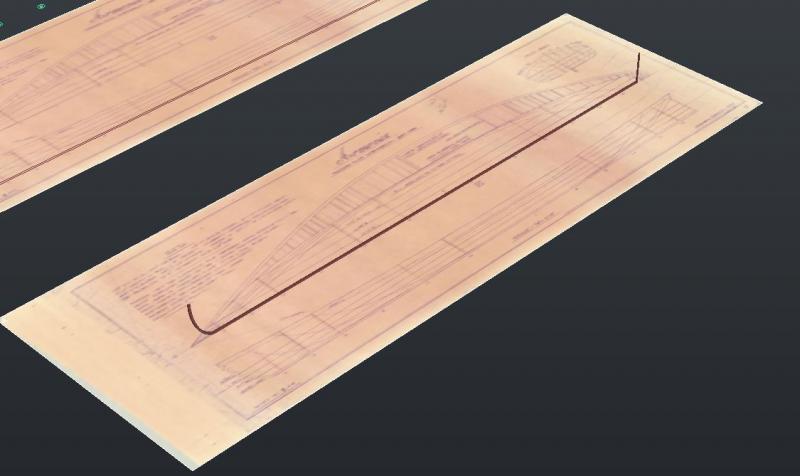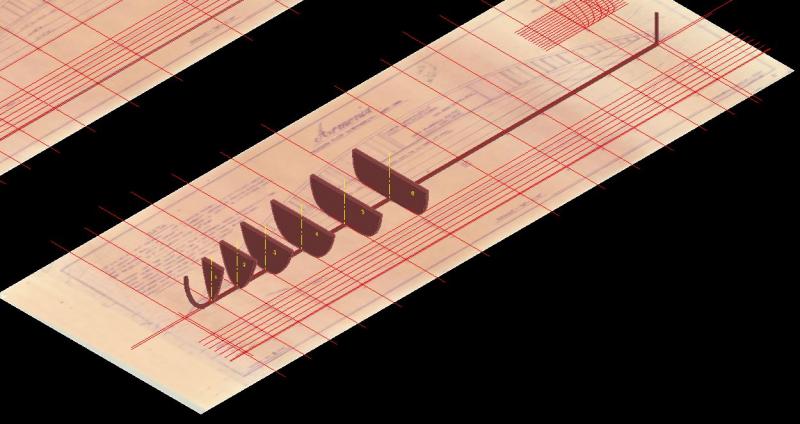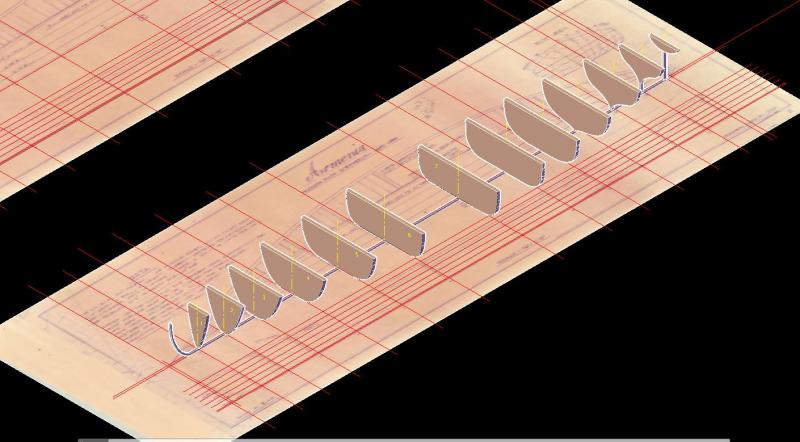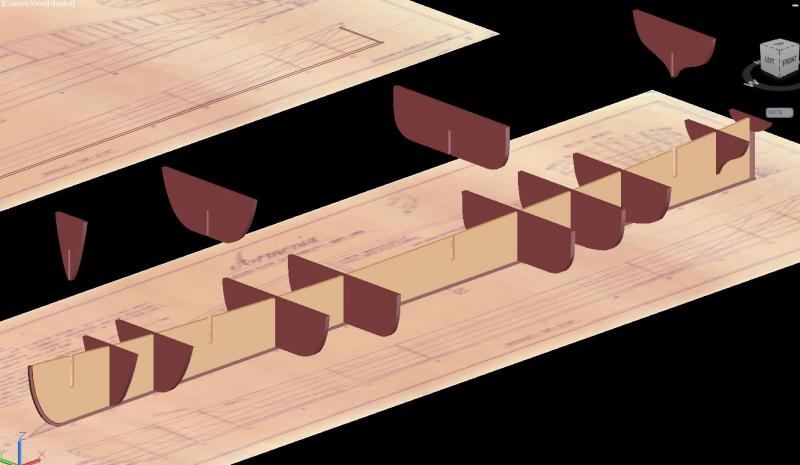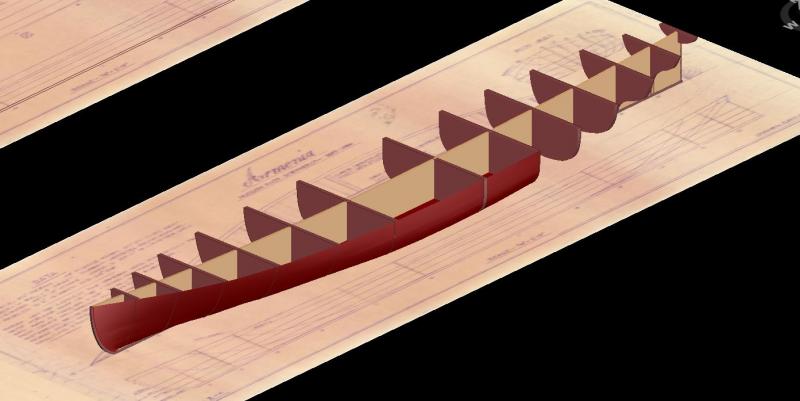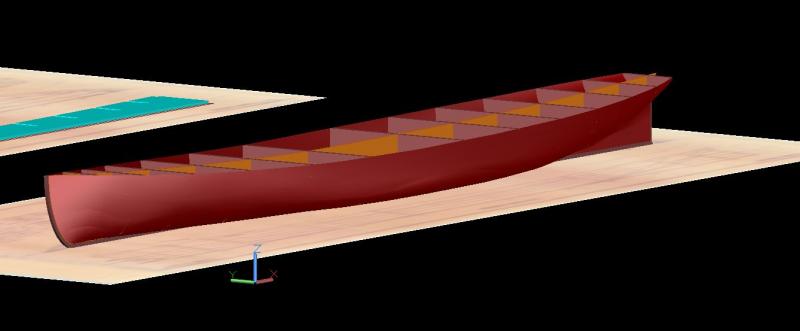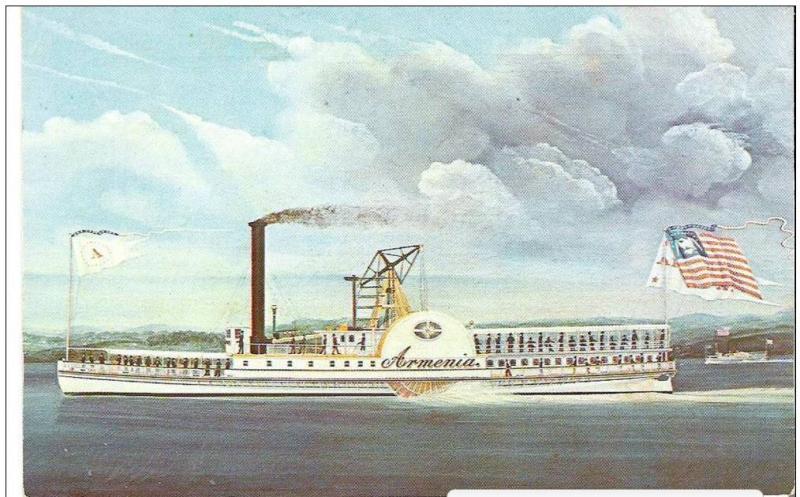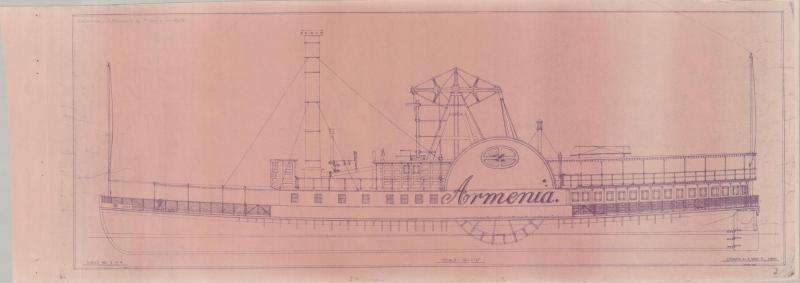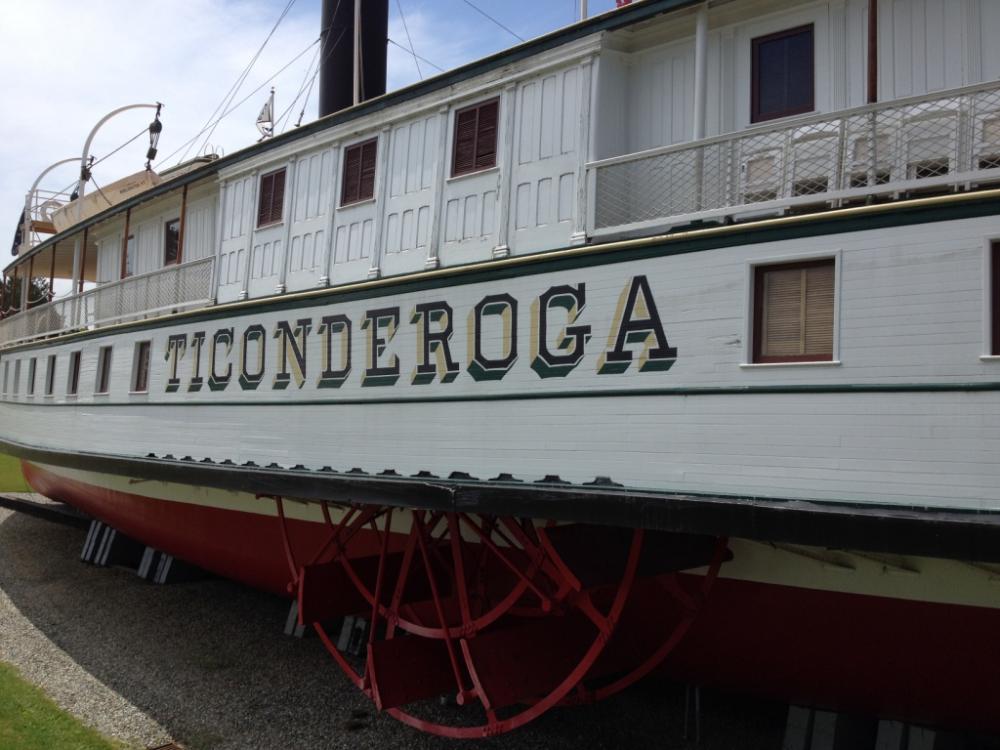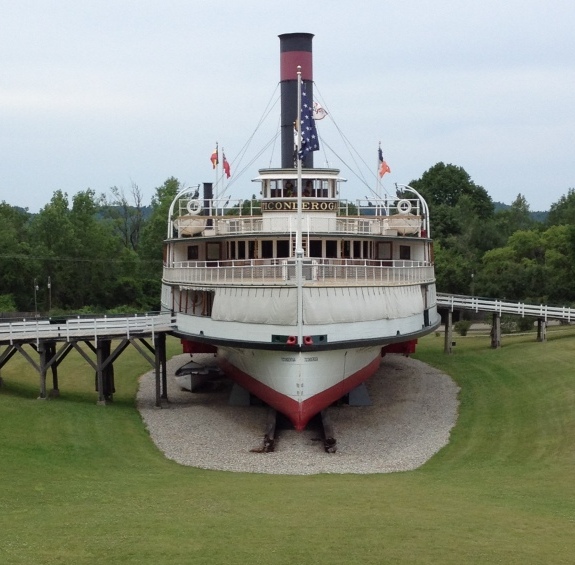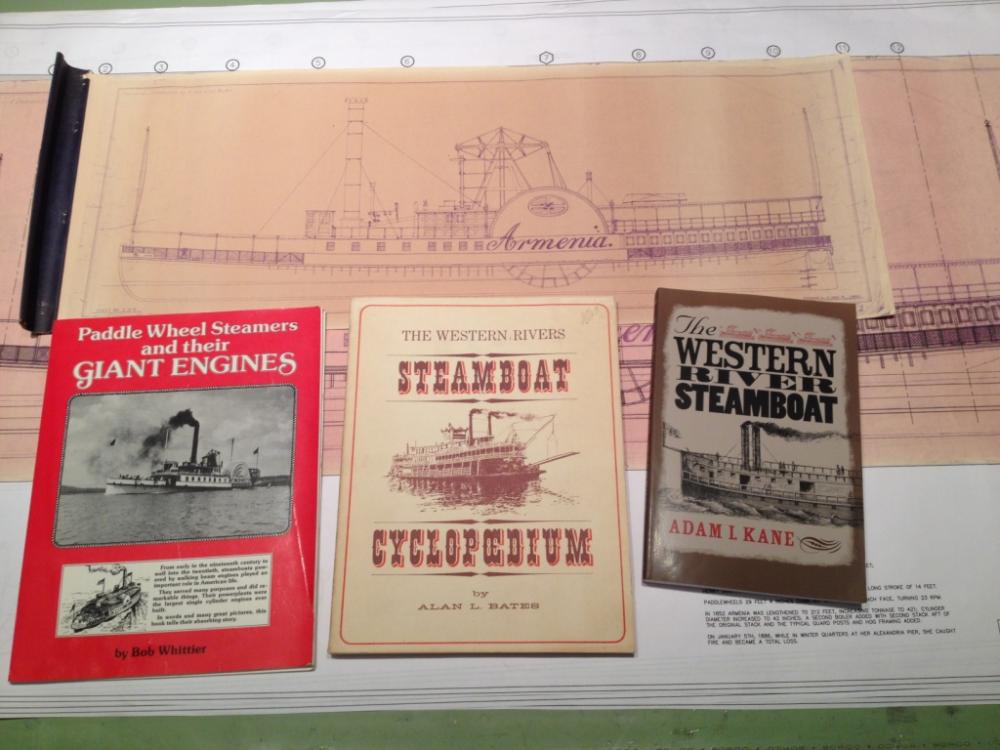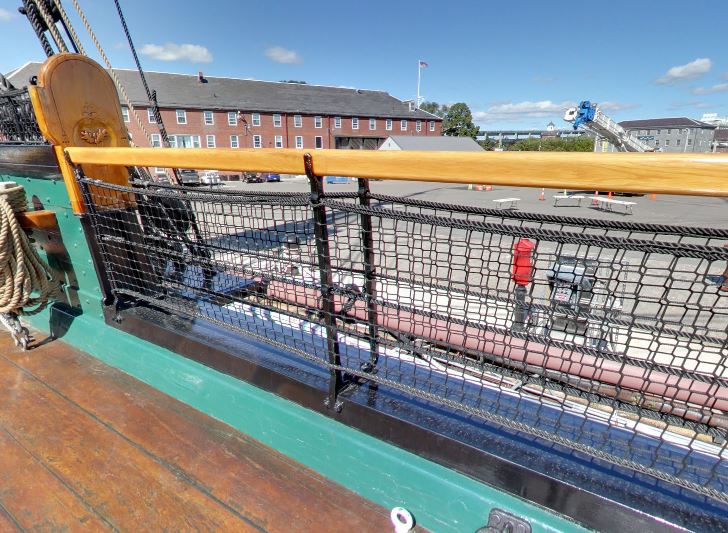-
Posts
828 -
Joined
-
Last visited
Content Type
Profiles
Forums
Gallery
Events
Everything posted by _SalD_
-
I couldn’t find too much information on what the boiler would look like so I took some artist liberties. From the drawings I knew its diameter and length, stack location and the stack height and diameter. I wasn’t sure about the number or location of the doors used to load the coal so I guessed at two. I also took some liberties and added a pressure gauge and sight glass. I always made fun of the designers at work when they added nuts and bolts to pieces of equipment that would never be seen when you printed out the drawing but now I know why they did it, it's fun. Boiler fit on the plans Boiler in the ship
-
Next I decided to work on the paddlewheels. I started with the crank arm with dimensions taken from the drawing. I also learnt that the length of the arm will be half of the stroke length. So with a stroke of 14’ the arm is 7 feet long. The flanges for the paddlewheel arms were next. Followed by the shaft. The buckets (paddles) on the paddlewheel are 8’-3” long by 2’-4” wide. There are 13 main buckets and 13 intermediate buckets per wheel. The wheel was 29’-4” in diameter and rotated at a speed of 17rpm. One question I had about the buckets is; are they made of one piece of wood 28” wide or of three planks 9 1/4” wide? After making one set of the main and intermediate buckets it was very simple to array (copy) them 13 times around the center hub. Iron bands were added as shown on the drawings. After one paddlewheel was completed it was just a matter of copying it to the other side for the complete paddlewheel assemble I like this view. wheels set in the hull
-
I don’t know if this next step is 100% correct but for easy of installing the main deck beams I thought I would run them across the top of the bulwarks and hull in one piece. The main deck floor beams are 4”x 6” (1/16”x3/32”) and are equally spaced at 2’-4 ½”. These were made from extruded shapes placed on top of the hull and bulkheads. An 8”x10” (1/8”x5/32”) guard timber was placed around the perimeter of the deck beams and faced with a 2” x 10” (1/32”x5/32”) plank. Wales were added at the top of the hull following the sheer and deck beam braces were added The deck itself was constructed using a surface command and given a thickness of 2”. For clarity the decking won’t be shown to often.
-
Now, because the ships engine will be such a defining part of the actual model my thinking right now is to make room for it in the hull. To do that a portion of some of the bulkheads, and of the BF will need to be cut away. The plan is to do cut them out after all the hull planking is complete so the model is sturdier. This picture shows the area required for the boiler and engine. Bulkheads and BF cut away. Then I thought, to help stiffen the hull, walls should be added to form out the engine compartment, although not part of the actual ship.
-
For those of you who have been directed here from my Armenia build in the ‘Build Logs for SCRATCH SHIP MODEL PROJECTS’, please bear with me. For those of you not coming from that build link I will be developing a 3-D model of the Hudson River sidewheeler, Armenia. Briefly, the Armenia (1847-1886) was built by Thomas Collyer, New York. She had a wood hull with an overall length of 187 feet, a molded beam of 28 feet with an extreme beam of 50 feet with a depth of 8 feet 6 inches. She displaced 391 tons. She was powered by a Henry Dunham vertical (walking) beam engine. The paddlewheels are 29 feet 4 inches in diameter by 8 feet 3 inch wide. I will be following drawings, by F. Van Loon Ryder dated 1954, 1/8” (1:96) scale, resized to 3/16” scale. The purpose of building this model is to help me better understand how to actually physically build this model from scratch and to learn 3-D cad. I will be building this model with AutoCAD version 2013. I’ve used AutoCAD for close to 30 years now but never its 3-D functions. This will be my first attempt at a 3-D model so all you proficient users of 3-D cad, if you see me doing something really stupid please don’t hesitate to let me know. That goes for all you steamboat experts also, as this is my first steam powered boat, if you notice that I am making some major faux pas on the ship please let me know. Alright enough talk lets draw something. I started by scanning the hard copy of the drawings and making .tiff files of them. Those files were then inserted into AutoCAD and scaled to 3/16” (1:64) scale. Using the Body Line drawing I laid the keel using a polyline and sweep command. Next I used polylines to trace over the body line cross sections. From these tracings I extruded the bulkheads needed to form the hull. A little a## backwards with this next step but using the bulkheads I formed the bulkhead former. Slots were made in each bulkhead with matching ones in the bulkhead former. These pieces will be used as templates to construct the actual model. Once all the bulkheads and the bulkhead former (BF) were completed I used the ‘loff’ command between each bulkhead to create the hull. OMG, if real planking could be this easy. Hull complete.
-
Hello all. This is my third build log here on MSW and will be my first attempt at scratch building a ship. The ship that I will be trying to build is a Hudson River sidewheeler named the Armenia. I acquired plans for this vessel through my local model club (Connecticut Marine Model Society) and there are two main reasons I decided to build her. First I found the ‘walking beam engine’ that drives her paddlewheels to be a fascinating piece of machinery; the second and maybe the more important is that the admiral likes her too. The original plans, by F. Van Loon Ryder dated 1954, are drawn at 1/8” (1:96) scale. There are four drawings detailing the ships profile, body lines, the engine, and different deck layouts and one sheet of technical specifications. The Armenia (1847-1886) was built by Thomas Collyer, New York. She had a wood hull; length 185 feet on deck, 187 feet overall; 28 feet molded beam, 50 feet extreme beam; depth 8 feet 6 inches; 391 tons. She was powered by a Henry Dunham vertical (walking) beam engine and had an unusually long stroke of 14 feet. The paddlewheels are 29 feet 4 inches in diameter an 8 feet 3 inch wide, turning at 23 rpm. In 1852 the Armenia was lengthened to 212 feet, increasing tonnage to 421; cylinder diameter increased to 42 inches; a second boiler added with second stack aft of the original stack and the typical guard posts and hog framing added. I will be modeling her original configuration. Since this is my first scratch build I’ve been a bit hesitant in starting her mainly because I wasn’t too sure of what material to use and how much of it I needed. After hemming and yawing for a few months I decided to do what I’ve done for the past 40 years and that’s to make my own drawings of the ship so I’d have a better understanding of just how she was built. I’ve only done building (structural) drawings but I think with the set of original drawings and a little help from the CMMC members and the people on this site I should be alright. For my set of drawings I decided to redraw them at 3/16” (1:64) scale instead of the original 1/8” scale. I thought it might be a little easier to build a slightly larger ship since the eyesight just ain’t what it used to be. At 3/16” scale the model will be approximately 35” long by 9 ½” wide. I also decided that instead of just making a set of 2-dimensional drawings I would try drawing this ship in 3-dimensional cad. I’m doing this for two reasons: One, since this is my first scratch build I will get a much better understanding of how the parts go together and secondly, I have used AutoCAD pretty much since its inception but only it’s 2-D capabilities so I thought to myself, self, maybe it’s time to learn something new. So I will be making a 3-D model of the ship before I attempt to physically build it. This should also save me from wasting a lot of material since it’s a lot easier to erase and redraw than it is to remake a number of pieces. Because I am drawing this ship in cad I thought it would be more appropriate to do so in the ‘CAD and 3D Modelling/Drafting Plans with Software’ forum on this site. So until I start the physical part of this build I will be continuing at the following link: http://modelshipworld.com/index.php/topic/14198-3-d-armenia-by-sald-–-hudson-river-sidewheeler-1847/?p=440043 I apologize for rambling on, like my daughter tells me “TLDR” (Too Long, Didn’t Read), but if anyone would like additional information about this ship please let me know, I’d be more than happy to send it or post it here. TO BE CONTINUED…..
-
Nicely done hervie. Even if I had a table saw I don't know if I would have ever thought of notching the planks that way. I think we all use whatever tools are most familiar to us hence the use of the drafting template to cut out my ports. As far as cutting the planks cross grain, use a very shape blade, a guide for the blade, use several small cuts to go through the plank, and have plenty of patience. Great job so far, keep it up.
-
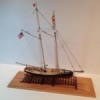
Steamboats and other rivercraft - general discussion
_SalD_ replied to Cathead's topic in Nautical/Naval History
This is just speculation on my part and not from any research but looking at it from a purely structural engineering point of view (since I am one) it appears that the arch is providing additional support for the exterior side of the lower deck beam. Referring to Glenn’s Heroine build log, this lower exterior beam is spanning the length of the wheel well and is supporting half the weight of the paddle wheel. By building the arch above this beam and connecting the arch and lower beam together with the vertical wall timbers it would provide a great amount of stiffness to the exterior side of the ship. The geometry (height) of the arch would then be a function of its span and design properties of the material used to build it, i.e. the higher the arch the smaller the stresses. Debris, water turbulence and aesthetics were probably also considered.- 281 replies
-
- Steamboats
- riverboats
-
(and 3 more)
Tagged with:
-

Steamboats and other rivercraft - general discussion
_SalD_ replied to Cathead's topic in Nautical/Naval History
Cathead, thanks for the information, I've just started to read up on these ships and have a lot to learn. Roger, thank you for the reference. Kurt, I appreciate your help and just let me know what the fee is. John, funny you should ask, the wife and I were up there last weekend. Took lots of pictures.- 281 replies
-
- Steamboats
- riverboats
-
(and 3 more)
Tagged with:
-

Steamboats and other rivercraft - general discussion
_SalD_ replied to Cathead's topic in Nautical/Naval History
I am fairly new to model ship building and have completed two wind powered sailing ships and would like to try a steam powered vessel for my next build. From my local ship building club I acquired a set of plans for the Hudson River sidewheeler ‘Armenia’ by F. Van Loon Ryder, dated 1954, 1:96 scale. What drew my attention to her was the interesting mechanism amidships that I’ve come to learn is called a ‘Walking Beam Engine’. As of now I’ve just started to do a little research on her and in the process have acquired the three books pictured below. Most of the information I’ve found by searching the web and in these books relate more towards the western (stern wheeler) style steamboat than the Hudson River (side wheeler) type steamboat. I was wondering if anyone could recommend a book or website that might give me more information on the construction of the side wheelers, specifically the hull construction. Thanks- 281 replies
-
- Steamboats
- riverboats
-
(and 3 more)
Tagged with:
-
Third base.... hervie, thinking more about your question I went back and reviewed what I did and looked at your pictures a little closer. First the top of the batten should have been aligned with the second mark down on the bulkhead. I think you have the top lined up with the third mark down which, like you said, is for the wale. You still might be able to use that though. The gun port sill is made from 1/4"x 3/16" stock, with the 3/16" side being vertical, if the distance between the two marks is 3/16" (I can't remember off hand if it is) you should be able to sit the sill right on the batten. So essentially you did mark the bottom of the sill. Now that the brain cells are firing again what I did was, I lined up the BOTTOM, not the top, of the batten with the second mark down. That way I could place the top of the sill up against the bottom of the batten, that I had left in place. I also think I turned the ship upside down when I set them so I had gravity working with me. I hope all this makes sense and sorry for the confusion, I'll just go back in my corner and watch.
-
David, While I was doing research into the same topic for my Syren I found this picture showing what the current netting looks like on the Constitution. It appears to be two pieces. I am far from being an expert on this subject so I don't know if it's 'historically' correct or not. If you use Google Map and type in 'Constitution' you can 'walk' around the ship for better details.
-
Jesse, I had the same problem with the guns being too high. I removed most of the lower lug, which you can't really see anyway, and added a pin to secure the cannon to the sled. http://modelshipworld.com/index.php/topic/8410-us-brig-syren-by-sald-–-model-shipways/?p=344563 My cannons still ended up a little high in the ports. I wouldn't mess around with the ports at this stage of the build. (just my opinion)
- 1,306 replies
-
- syren
- model shipways
-
(and 1 more)
Tagged with:
-
Gary after going back and reviewing what I had done I don't think there is any reason you need to install the hammock cranes and netting at this point. I don't see a problem with waiting until after you install the deadeyes. And your gut was right they do get in the way, I bent a few of the cranes and snapped the wood rail a couple times while working around them.
- 659 replies
-
- syren
- model shipways
-
(and 1 more)
Tagged with:
-
Great job Elijah the hull looks terrific.
- 701 replies
-
- phantom
- model shipways
-
(and 1 more)
Tagged with:
About us
Modelshipworld - Advancing Ship Modeling through Research
SSL Secured
Your security is important for us so this Website is SSL-Secured
NRG Mailing Address
Nautical Research Guild
237 South Lincoln Street
Westmont IL, 60559-1917
Model Ship World ® and the MSW logo are Registered Trademarks, and belong to the Nautical Research Guild (United States Patent and Trademark Office: No. 6,929,264 & No. 6,929,274, registered Dec. 20, 2022)
Helpful Links
About the NRG
If you enjoy building ship models that are historically accurate as well as beautiful, then The Nautical Research Guild (NRG) is just right for you.
The Guild is a non-profit educational organization whose mission is to “Advance Ship Modeling Through Research”. We provide support to our members in their efforts to raise the quality of their model ships.
The Nautical Research Guild has published our world-renowned quarterly magazine, The Nautical Research Journal, since 1955. The pages of the Journal are full of articles by accomplished ship modelers who show you how they create those exquisite details on their models, and by maritime historians who show you the correct details to build. The Journal is available in both print and digital editions. Go to the NRG web site (www.thenrg.org) to download a complimentary digital copy of the Journal. The NRG also publishes plan sets, books and compilations of back issues of the Journal and the former Ships in Scale and Model Ship Builder magazines.


